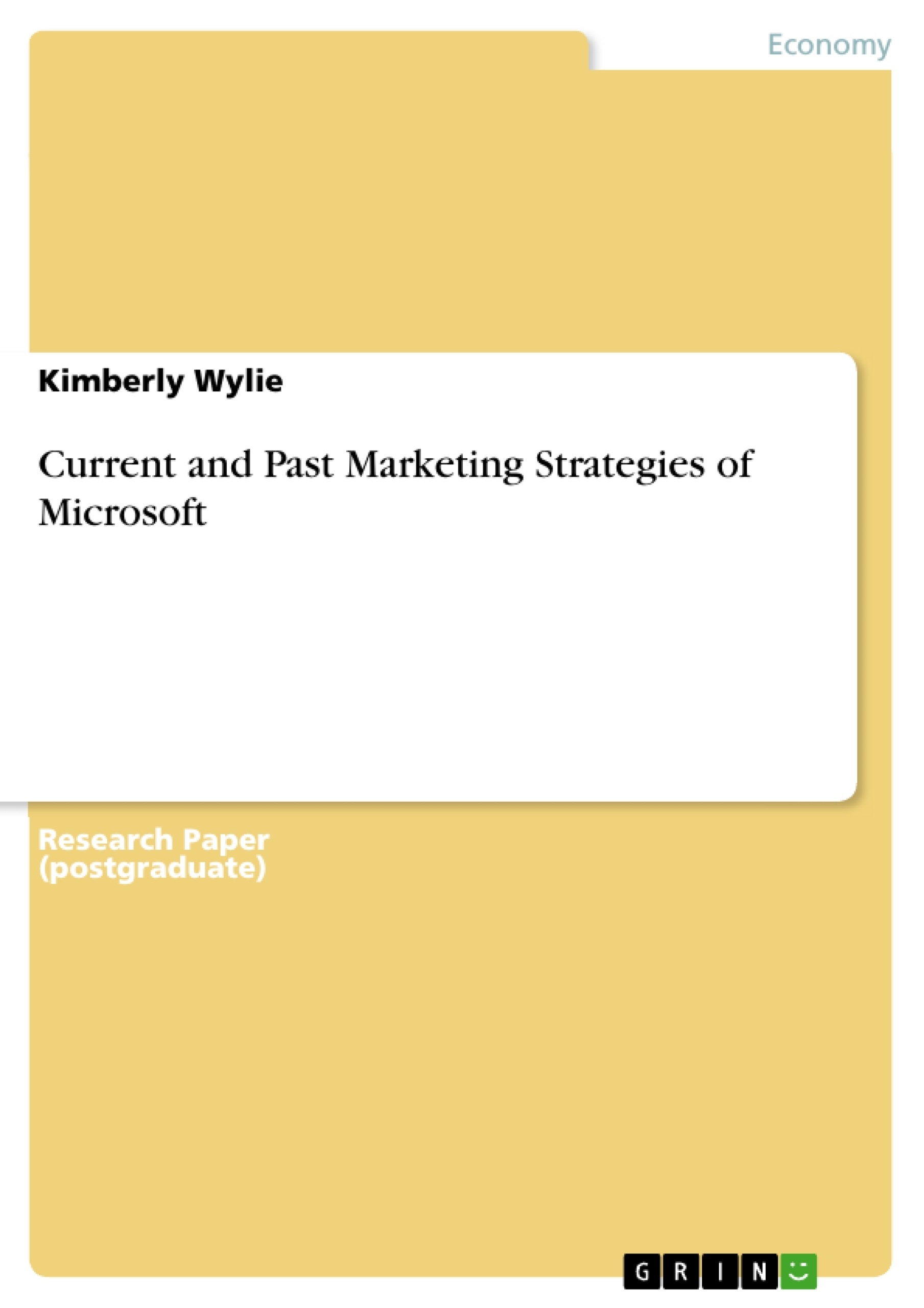In today’s hyper-competitive world, organizations must fight tooth and nail to become successful in an industry, and work even harder to maintain that success. Each component of an organization’s business must be as efficient and effective as possible, in order to create sustainable competitive advantages. This includes marketing strategies. Marketing strategies must be developed and implemented to utilize an organization’s strength to take advantage of the opportunities the company has identified, while protecting it from any outside threats. Microsoft Corporation has been extremely successful for doing just that. This paper will give a brief overview of Microsoft Corporation, a discussion of marketing strategies in general, and finally what strategies Microsoft has used in the past and the present to reach the pinnacle of their industry.
Table of Contents
- Abstract
- Introduction
- Microsoft Corporation Overview
- Marketing Strategies Overview
- Microsoft's Past and Current Marketing Strategies
- References
Objectives and Key Themes
This paper aims to provide an overview of Microsoft Corporation's marketing strategies, past and present, contributing to its industry leadership. It explores how Microsoft leveraged its strengths and adapted to market challenges to achieve and maintain its success.
- Overview of Microsoft Corporation and its market position.
- Analysis of general marketing strategies.
- Examination of Microsoft's past marketing strategies.
- Discussion of Microsoft's current marketing strategies.
- Analysis of Microsoft's competitive landscape and challenges.
Chapter Summaries
Abstract: This section provides a concise overview of the paper's purpose, which is to examine Microsoft's marketing strategies and their contribution to the company's success in a highly competitive environment. It highlights the importance of effective marketing in building and maintaining sustainable competitive advantages. The abstract sets the stage for a detailed exploration of Microsoft's approach to marketing.
Introduction: Similar to the abstract, the introduction emphasizes the hyper-competitive nature of the business world and the critical role of effective marketing strategies in achieving and sustaining success. It explicitly states the paper's objectives: to provide an overview of Microsoft Corporation, discuss marketing strategies in general, and finally, detail Microsoft's past and present marketing strategies. This section sets the foundation for the subsequent in-depth analysis.
Microsoft Corporation Overview: This chapter provides a historical overview of Microsoft, from its founding by Bill Gates and Paul Allen in 1975 to its position as the world's leading software company in 2003. It traces the company's key developments, including the creation of MS-DOS and Windows, its expansion into various market segments (video games, enterprise software, etc.), and its encounters with antitrust concerns. The chapter illustrates Microsoft's growth and evolution, highlighting pivotal moments and challenges that shaped its trajectory. The discussion of antitrust issues emphasizes the complexities of maintaining a dominant market position.
Keywords
Microsoft, marketing strategies, competitive advantage, business success, antitrust, software industry, Windows, MS-DOS, market dominance.
Microsoft Corporation Marketing Strategies: FAQ
What is the purpose of this document?
This document provides a comprehensive preview of a paper analyzing Microsoft Corporation's marketing strategies. It includes the table of contents, objectives, key themes, chapter summaries, and keywords.
What topics are covered in the paper?
The paper offers an overview of Microsoft Corporation, its market position, and a detailed analysis of its past and present marketing strategies. It also explores general marketing strategies and examines Microsoft's competitive landscape and challenges, including antitrust concerns.
What are the key themes explored in the paper?
Key themes include the role of effective marketing in achieving and maintaining sustainable competitive advantage, Microsoft's evolution and growth, the impact of key developments (like MS-DOS and Windows) on its success, and the complexities of managing a dominant market position in a highly competitive environment.
What is covered in the "Microsoft Corporation Overview" chapter?
This chapter provides a historical overview of Microsoft from its founding to its position as a leading software company. It traces key developments, expansion into different market segments, and encounters with antitrust issues, illustrating its growth and evolution.
What is the focus of the "Marketing Strategies Overview" section?
While not explicitly detailed in the preview, this section likely provides a general framework for understanding marketing strategies before focusing specifically on Microsoft's approach.
What does the abstract cover?
The abstract summarizes the paper's aim to examine Microsoft's marketing strategies and their contribution to the company's success. It highlights the importance of effective marketing in building and maintaining sustainable competitive advantages.
What keywords are associated with this paper?
Keywords include: Microsoft, marketing strategies, competitive advantage, business success, antitrust, software industry, Windows, MS-DOS, and market dominance.
What is the overall objective of the paper?
The paper aims to provide an overview of Microsoft Corporation's marketing strategies, past and present, and how they contributed to its industry leadership. It analyzes how Microsoft leveraged its strengths and adapted to market challenges.
What is included in the chapter summaries?
The chapter summaries provide concise overviews of the content of each chapter, including the abstract and introduction, offering a brief glimpse into the main arguments and findings of each section.
- Quote paper
- Kimberly Wylie (Author), 2003, Current and Past Marketing Strategies of Microsoft, Munich, GRIN Verlag, https://www.grin.com/document/60773




